Leah Pistorius
April 2, 2020
Two HCDE Master’s students recently joined developers, coders, builders, and technology enthusiasts for an elite competition to advance the potential of virtual and augmented reality technologies.
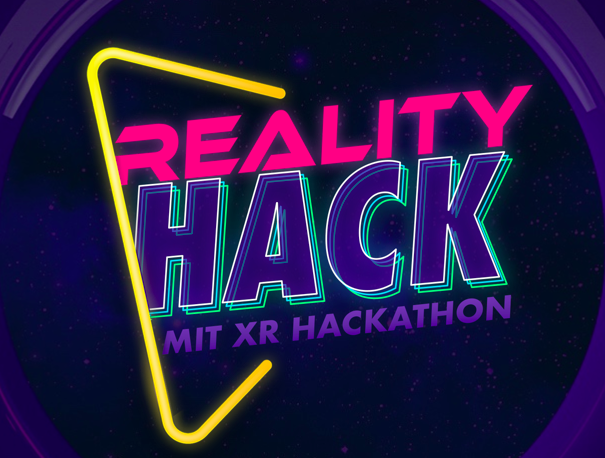
Jeff Matarrese and Eliza Li, both second-year master’s students in the Department of Human Centered Design & Engineering, brought their UX design chops to the MIT Reality Hack, a five-day event held every January at MIT’s campus in Boston.
MIT Reality Hack accepts 350 students and professionals from around the world for an immersion in workshops, presentations, discussions, and a three-day hackathon that culminates in judging and a public showcase.
Both Matarrese and Li learned about the hackathon through participation in HCDE’s Project EMAR, led by Senior Research Scientist Elin Björling. “We have been working in a sub-group focused on human-robot interactions in VR, so we all share VR-related learning resources and events with one another,” Li said.
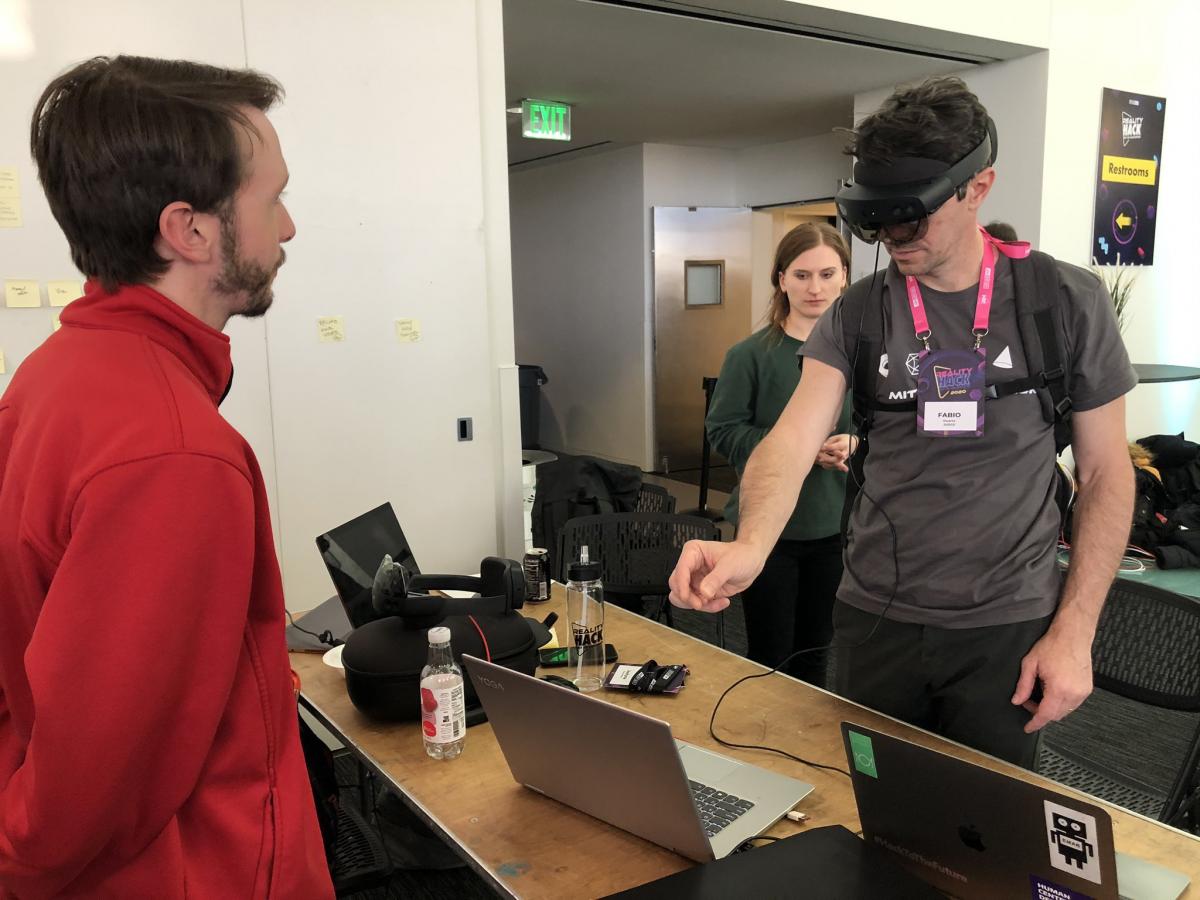 Hackathon participants developed their ideas with the support of industry mentors
Hackathon participants developed their ideas with the support of industry mentors
During the first two days of the Reality Hack, participants form teams around topical interests, such as health, learning, social good, and many more. Teams have 72 hours to design and build working prototypes of new uses for AR or VR in their selected track, competing for cash and hardware prizes from industry sponsors. Mentors from industry and academia guided the teams, and the hackathon supplied teams with necessary software and hardware. “Learning by doing especially holds true in the XR space,” said Li. “It was great to have the dedicated time to learn and hack, while having ready access to mentorship to help us get over roadblocks.”
“I appreciate that the event focuses on bringing a lot of diverse minds together,” Matarrese said. “Eliza and I shared some moments of panic, thinking that our design backgrounds meant we didn’t belong in that space, where technical expertise is clearly a sought after skill. But we both found teams where our skills meshed well.”
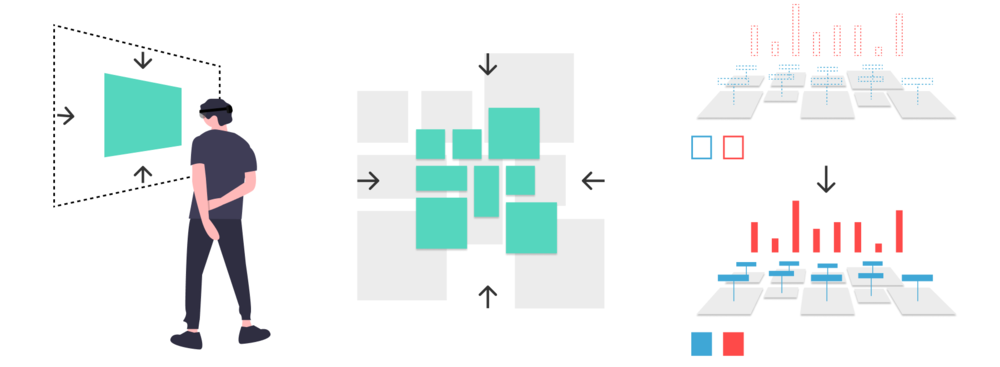 HCDE student Jeff Matarrese’s team developed spaceAR, an augmented reality space planning tool
HCDE student Jeff Matarrese’s team developed spaceAR, an augmented reality space planning tool
Matarrese and his teammates are all former architects who formed a team around a goal of helping those in the architecture field increase productivity. Their team developed spaceAR, an augmented reality space planning tool. Building space planning is typically an analog process involving sketching, creating, and moving physical model representations of space around on a table. With spaceAR, space planners and clients can collaborate on the arrangement of spaces with real-time feedback on key adjancecy metrics, area sizes, number of occupants, and the design history.
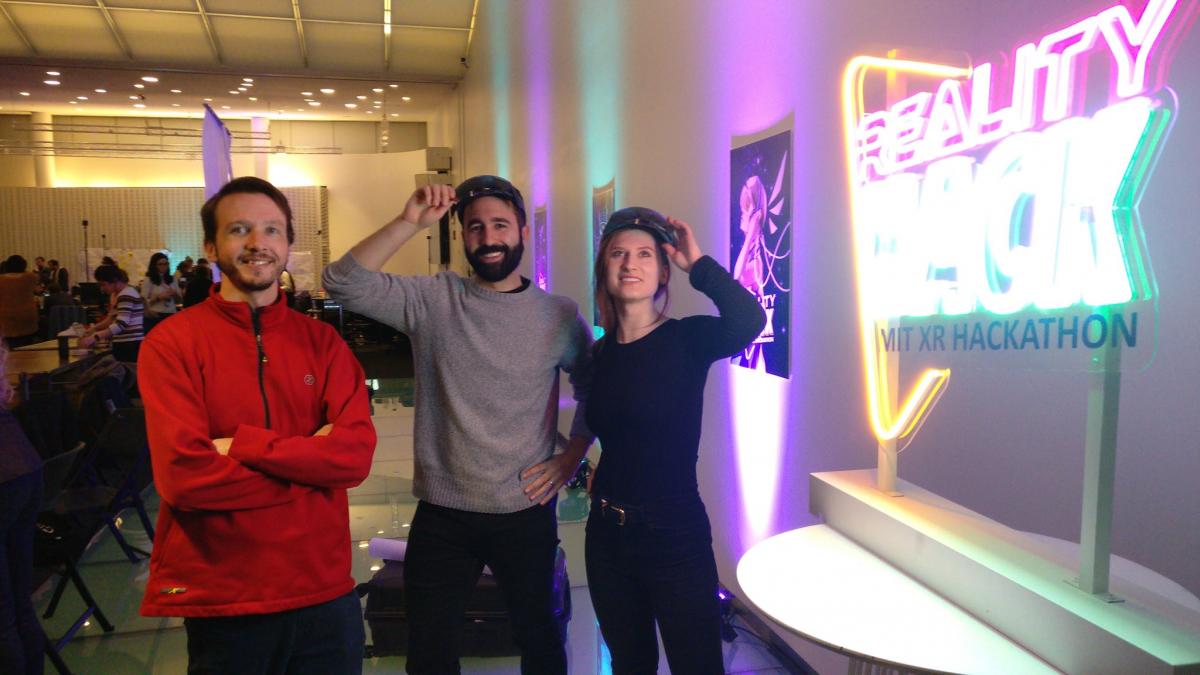 Matarrese’s team received the award for Best of Logistics, Training, Productivity, and was a finalist in the Best of AR category
Matarrese’s team received the award for Best of Logistics, Training, Productivity, and was a finalist in the Best of AR category
“My team is interested in making tools more accessible for architects to communicate their ideas,” Matarrese said. “The building plan in particular can be difficult to communicate, since there are so many variables attached to each element of the space. This tool is exciting to us because it could also be used by space planners in other domains, such as event planning.”
Matarrese’s team was honored with the award for Best of Logistics, Training, Productivity, and was a finalist for the Best of AR award.
 HCDE student Eliza Li’s team created Blinkenlights, an AR assistant to support individuals with Alzheimer's disease
HCDE student Eliza Li’s team created Blinkenlights, an AR assistant to support individuals with Alzheimer's disease
Li’s team created Blinkenlights, an AR assistant that helps individuals with Alzheimer's disease have a better quality of life by promoting independence with day-to-day tasks and facilitating memory-recall of loved-ones. Blinkenlights also invites remote family members and caretakers to engage in care for the individual by sending reminders, adding events to calendars, and monitoring the user's task progress.“ Our system enables caretakers to place spatial post-it notes to provide time-sensitive and location-specific reminders, like locking the door,” Li described. “It also uses facial recognition to pull up relevant photos of loved-ones that will help a patient with memory recall.”
More about Eliza's project, Blinkenlights »
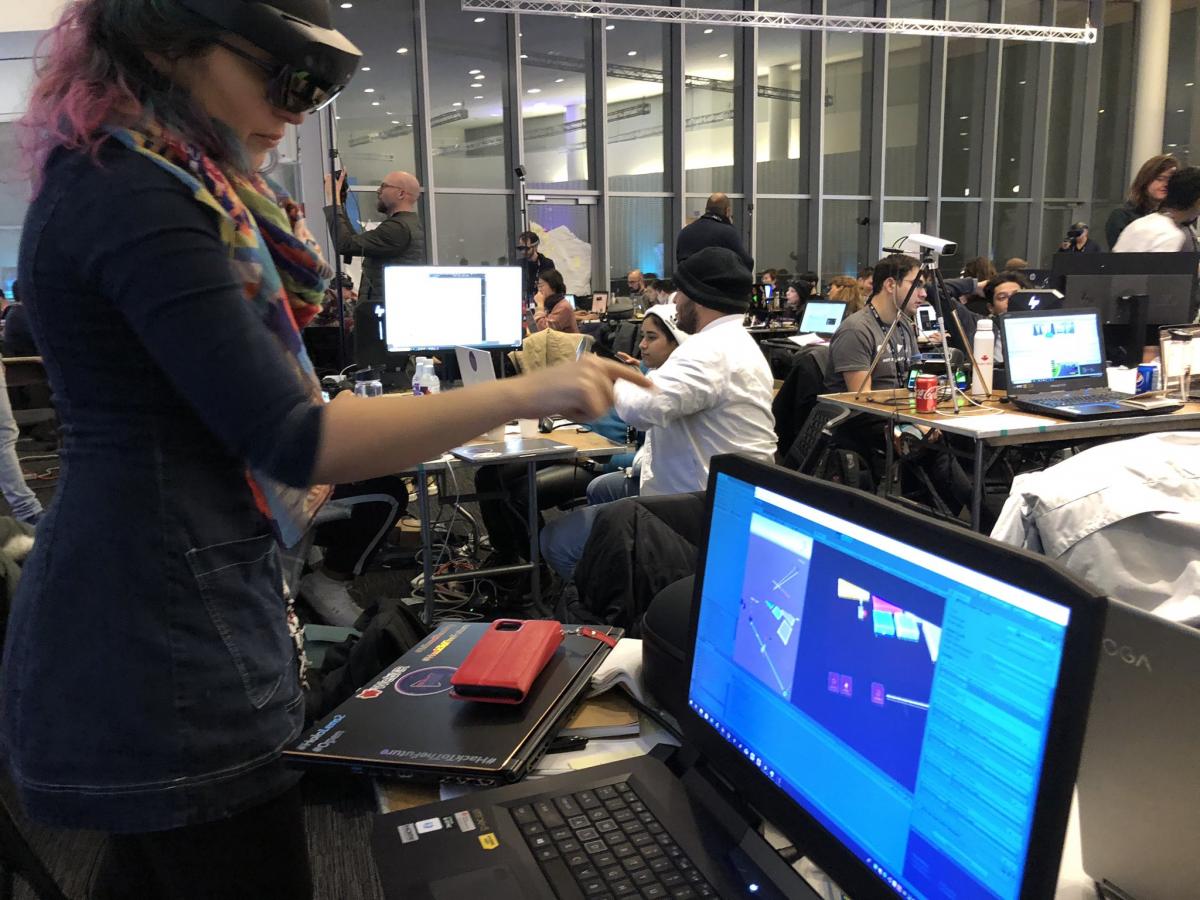 Reality Hack mentor Ayşegül Yönet, from Microsoft, tests one of the hackathon prototypes in VR
Reality Hack mentor Ayşegül Yönet, from Microsoft, tests one of the hackathon prototypes in VR
Li said that participating in the hackathon complimented her HCDE student experience by finding a place to integrate what she has learned in the program. “The hackathon afforded me the opportunities to apply human-centered design in diverse problem spaces, with a variety of stakeholders and partners. It has also broadened my horizon to see and learn how others in the field and adjacent fields are applying the craft, and helped me realize that there is so much more to UX Design than what I've known.”
Assets and tools produced at the MIT Reality Hack are open source, aimed at empowering XR creators beyond the direct participants. Learn more about the event at mitrealityhack.com.